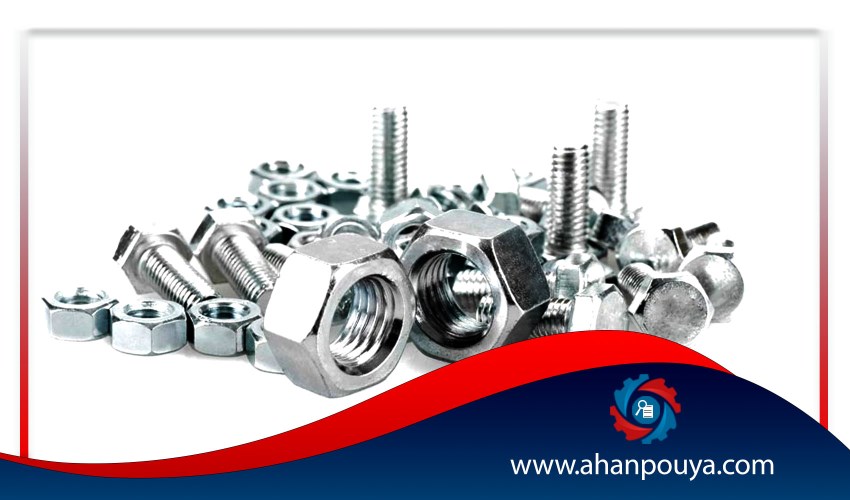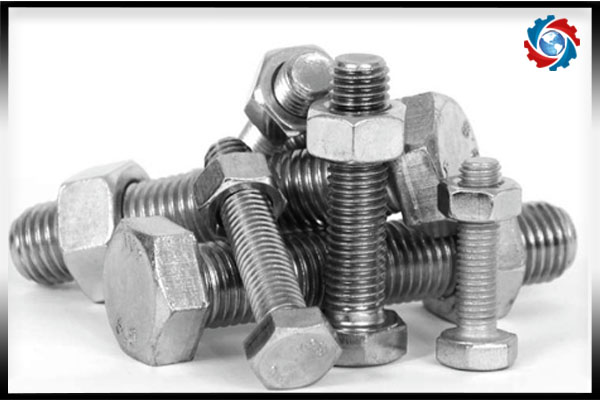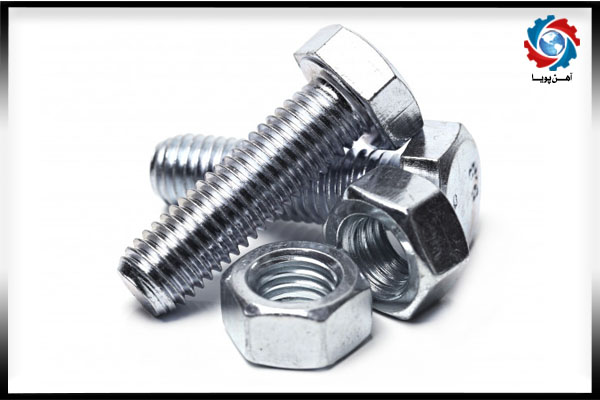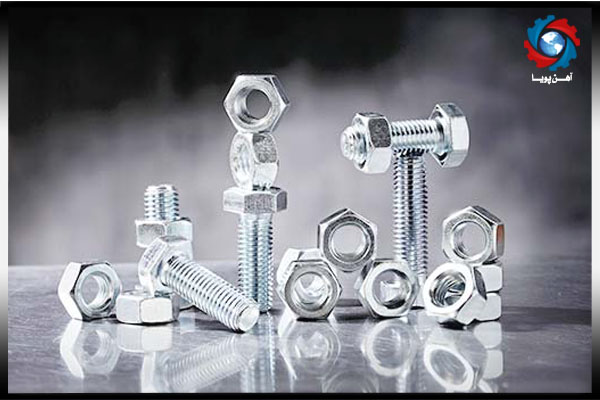
Steel bolts, called dry bolts, are among the most resistant bolts that have different types and models. These types of fittings are often made of stainless steel alloy, which combines elements such as carbon, nitrogen, aluminum, silicon, sulfur, nickel, copper, titanium, etc. Stainless steel is one of the family of iron-based alloys that the presence of chemical elements in its composition has made this alloy resistant to rust and heat.
Dry bolts, produced using stainless steel, are of high variety and are characterized by numbers called grades. Each grade has a unique characteristic and application, for example, grade 8.8 as the most widely used dry bolt has a weight of 80 kg, while grade 12 has a load bearing of 385 MPa and weighs more than 120 kg. Also grade 10.9 is often used in industry and construction due to its robustness and standard features.

There are two basic methods of turning and cooling for the production of fittings, both of which are used to produce dry bolts. Lathe is the oldest method for making fittings and is still common for the production of screws with very large diameters or small nuts. However, the significant drawback of this method is that it eliminates the polishing of the metal surface and makes it rough.
The cooling is a method of shaping the wire in different shapes and creates a cut or hole without heating the metal in it. For years, fittings have been made by cold working method, because it has many advantages economically and quality. For example, the production rate can produce 12,000 pieces per hour. Also, if stainless steel is molded by cooling method, it will be stronger and more resistant. In the cooling method, dry bolts are molded at room temperature and the screws are gradually formed by squeezing steel in different molds at high pressure. After molding, bolts are ready to create grooves, which are created by rolling or cutting, and the polished surface of the metal is not destroyed. Finally the bolts are placed against extreme heat to tighten .
In places where corrosion is a challenging issue, it is possible to fix this problem by covering galvanized bolts, but in these situations, the costs of protection, the cost of possible failure and loss of appearance beauty should also be taken into account. The use of dry bolts is an easier and cheaper solution compared to coating and plating other types of plates and nuts. Because the presence of chromium in the composition of this bolt causes its resistance to corrosion and increases its efficiency. Chromium is an element that provides anti-compression properties for steel. Usually, these alloys do not rust in their composition despite more than 12% chromium. This alloy works well in temperate atmospheres, fresh water, mining water, steam, carbonic acid, crude oil, gasoline, blood, alcohol, ammonia, mercury, soap, sugar solutions and other reactives.
By adding nickel to iron-based alloys, their hammer-eating capability improves. Hammer-eating properties are derived from primary austenite and carbon and nitrogen directly affect the resistance of these alloys. The variation in nitrogen content in the composition of these alloys compensates for the lack of mechanical properties in low carbon alloys of stainless steel. Also, by adding aluminum, titanium and columbium to the stainless steel compound, mechanical properties of these materials can be significantly enhanced through heat treatment. The combination of ferrite and austenite elements in the structure of dry bolts increases their strength compared to other types of connections. Dry bolts are commonly used for basic civil engineering equipment and equipment due to their high strength in the aerospace industry or in the manufacture of thick bolts.

Adding sulfur and selenium to the connection combination improves their lathe capability. For example, some grades of dry bolts with higher sulfur content have better lathe capability. This property is very useful in the production of large bolts or in cases where small products or special products are required.
In some cases, if high strength is not considered, some dry bolts and grades with 18% chromium and no nickel can be used. Although these types of connections have less resistance and cost, they are widely used in decorations. Dry bolts are widely used in the architectural industry due to their attractive and impressive appearance. Usually, these types of fittings are used in cars, cameras, counters, home appliances, showcases and products that have the beauty of appearance necessary to increase their sales capability.

Some designers may tend to consider electroplated fasteners as a low-cost solution to corrosion. While the use of electroplated fasteners is useful in some cases (including being added to create a special coating or color matching of the electroplated coating), it is better to use fittings that are resistant to corrosion without the need for coatings. Dry bolts do not require any coating for protection compared to other types of fittings.

Ahan Pouya with more than a decade of best-selling experience, adheres to professional and ethical principles in the field of selling and buying at inside and outside the borders of Iran, helping you in the steel industry.